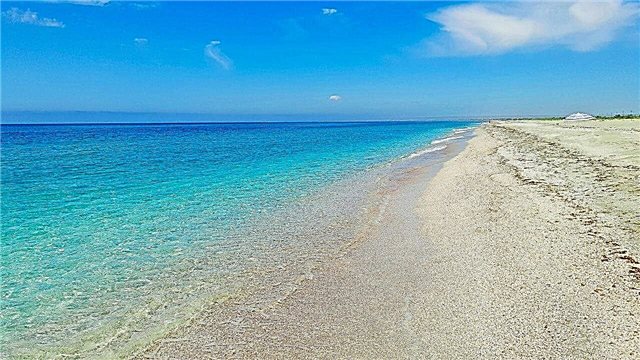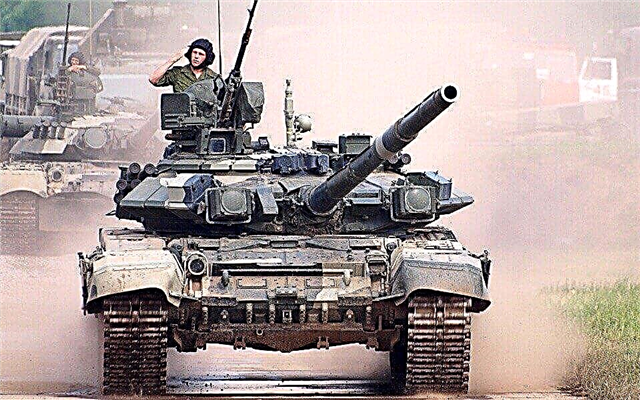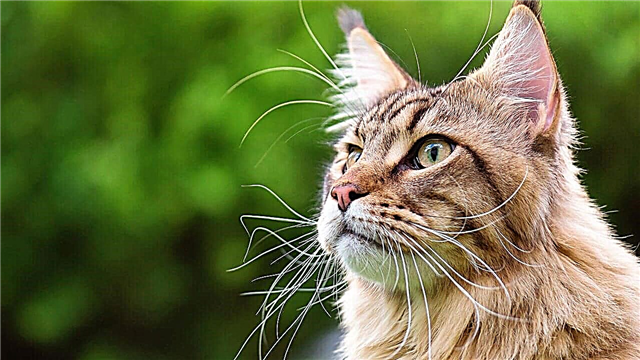Mother Nature populated the Earth not only with cute and fluffy creatures, the videos with which we are touched on YouTube, but also with real killing machines, the meeting with which for a person often turns out to be the last in life.
We present to you the most dangerous animals in the world, from seemingly harmless miniature killers to huge and deadly monsters.
15. Poisonous frogs
 Basically, all the poisonous species of frogs live in Central, South America, or in Madagascar. Their peculiarity lies in the fact that their glands produce poison, which in its strength is capable of killing an adult or even several.
Basically, all the poisonous species of frogs live in Central, South America, or in Madagascar. Their peculiarity lies in the fact that their glands produce poison, which in its strength is capable of killing an adult or even several.
The danger level of this species is mitigated by the fact that they do not attack themselves, but can harm a person only if they hold such frogs in their hands for a long time.
14. Polar bear
 It would seem the smallest creature: polar bears look just like teddy bears, they are the prototypes of many fairy-tale and animated characters, the favorites of children. But in reality, in real life they are cold-blooded predators that pose a huge danger to humans.
It would seem the smallest creature: polar bears look just like teddy bears, they are the prototypes of many fairy-tale and animated characters, the favorites of children. But in reality, in real life they are cold-blooded predators that pose a huge danger to humans.
Some time ago, poachers were actively exterminating them, and polar bears were very rare even in the conditions of their natural environment. When their numbers were restored, for some reason they suddenly stopped being afraid of people and even began to easily go out into settlements, thereby threatening the lives of many people.
13. Crocodile
 Perhaps one of the most frightening animals of our rating. The huge jaw of a crocodile with stub teeth plunges a person into horror. Moreover, this animal has incredible speed, and it is almost impossible to notice.
Perhaps one of the most frightening animals of our rating. The huge jaw of a crocodile with stub teeth plunges a person into horror. Moreover, this animal has incredible speed, and it is almost impossible to notice.
While the inhabitants of Africa (where crocodiles live) enrich them, tourists consider these predators the most ferocious of their kind.
12. Monkeys
 Probably, it will seem strange to many to see these, at first glance, cute little creatures in our ranking. Looking into the big round eyes of these charming monkeys, the tongue does not turn to call them dangerous to humans, and even to assume this. But, unfortunately, the way it is.
Probably, it will seem strange to many to see these, at first glance, cute little creatures in our ranking. Looking into the big round eyes of these charming monkeys, the tongue does not turn to call them dangerous to humans, and even to assume this. But, unfortunately, the way it is.
Now the monkeys settled closer to the urban settlements and get food in an urban environment, in connection with which there have been more frequent cases of attacks on people (especially small children).
11. Flies
 The leader in the ranking of the most dangerous animals in the world is a fly. An ordinary fly that we can see daily on the street or in our apartment. Paradoxical as it may seem, this small harmless creature can do tremendous harm to human health, sometimes even fatal.
The leader in the ranking of the most dangerous animals in the world is a fly. An ordinary fly that we can see daily on the street or in our apartment. Paradoxical as it may seem, this small harmless creature can do tremendous harm to human health, sometimes even fatal.
The thing is that flies carry harmful bacteria that can provoke diseases such as tularemia, trachoma, anthrax and many others.
10. Cone
 A snail with a funny name is a predator from the gastropod family. You can easily confuse it with any other snail on the beach, but this creature is deadly. Only one drop of cone venom can kill twenty adults.
A snail with a funny name is a predator from the gastropod family. You can easily confuse it with any other snail on the beach, but this creature is deadly. Only one drop of cone venom can kill twenty adults.
There is no antidote to it, which means that if you are bitten by such a snail, you will almost certainly die within a few minutes. Most cones live in warm tropical seas, but there are those who live in high latitudes.
9. Buffalo
 These horned giants can weigh more than 700 kg and even a lion will be afraid to go out with a buffalo one on one. Buffalos, as a rule, keep in large groups, and will not tolerate the slightest threat to the cubs.
These horned giants can weigh more than 700 kg and even a lion will be afraid to go out with a buffalo one on one. Buffalos, as a rule, keep in large groups, and will not tolerate the slightest threat to the cubs.
Their attack begins with a take-off run, and the main "ramming" weapon, long horns, is used. And when the body of the victim falls to the ground, the buffalo begins to trample it with its hooves. In Africa, buffalo kill more than 200 people a year.
8. Black mamba
 The eighth number of our deadly hit parade is the largest snake in Africa (up to three meters long). In fact, the mamba is not black, its scales are usually brown or olive in color, and the snake got its name for the ink-black internal cavity of the mouth, which it shows when threatened.
The eighth number of our deadly hit parade is the largest snake in Africa (up to three meters long). In fact, the mamba is not black, its scales are usually brown or olive in color, and the snake got its name for the ink-black internal cavity of the mouth, which it shows when threatened.
In pursuit of an unlucky victim, a reptile can reach speeds of up to 11 km per hour over a short distance. And having caught up, without hesitation, it will release poison so strong that one serving can kill a dozen people in an hour. Mamba makes bites up to a dozen times in one attack. Without an antidote, her bite always ends in death.
7. Elephant
 Elephants are among the 10 most intelligent animals, but they can be aggressive and participate in destructive actions against people. In India, male elephants regularly enter villages at night, destroying homes and killing residents.
Elephants are among the 10 most intelligent animals, but they can be aggressive and participate in destructive actions against people. In India, male elephants regularly enter villages at night, destroying homes and killing residents.
According to statistics in an article by National Geographic (2005), about 500 people die every year due to attacks by elephants.
6. Great White Shark
 This predator can be found in all oceans of the world. A huge fish (an adult shark, as a rule, grows up to 6.4 meters in length) is responsible for the majority of shark attacks on humans.
This predator can be found in all oceans of the world. A huge fish (an adult shark, as a rule, grows up to 6.4 meters in length) is responsible for the majority of shark attacks on humans.
Despite their reputation and what you saw in films such as the popular Jaws, great white sharks do not prefer humans to all their other “dishes”. People are too bony for them and are likely to spit out after the first bite.
Most attacks happen because the shark makes a test bite to make sure the prey is edible (this is done not only with people, but also with buoys, fragments of surfboards and boats).
5. Sea wasp
 Fifth place in the ranking of the deadliest animals on Earth is occupied by a square jellyfish that lives on the northern shores of Australia. It is called a jellyfish box or sea wasp because of the tentacles, each of which is equipped with stinging cells. They release microscopic stings that inject poison into the victim.
Fifth place in the ranking of the deadliest animals on Earth is occupied by a square jellyfish that lives on the northern shores of Australia. It is called a jellyfish box or sea wasp because of the tentacles, each of which is equipped with stinging cells. They release microscopic stings that inject poison into the victim.
These sea creatures are hard to see, because they are almost transparent, and careless bathers can stumble upon the tentacles of a sea wasp quite by accident.
Surprisingly, ordinary vinegar is an effective treatment for someone stung by a jellyfish box. Vinegar should be applied to the stung area and we hope that this advice will never come in handy.
4. Hippopotamus
 Hippopotamus, or "river horse" kills people more often than other large animals. Contrary to popular belief, hippos cannot truly breathe underwater, but they hold their breath for a long time and, being heavier than water, can walk along the bottom "like a dry land."
Hippopotamus, or "river horse" kills people more often than other large animals. Contrary to popular belief, hippos cannot truly breathe underwater, but they hold their breath for a long time and, being heavier than water, can walk along the bottom "like a dry land."
Females with small cubs are the most dangerous and, if you are a sane person, you will prefer to stay away from their huge jaws and 51-centimeter fangs. Believe it or not, the whale is the closest living relative of hippos.
3. Brazilian wandering spider
 In 2010, appeared in the Guinness Book of Records as the most poisonous spider in the world. This potentially deadly arachnid is found in tropical South America, and one species lives in Central America.
In 2010, appeared in the Guinness Book of Records as the most poisonous spider in the world. This potentially deadly arachnid is found in tropical South America, and one species lives in Central America.
The word "wandering" in the name of the spider is explained by its tendency to wander through the jungle at night. Unlike many spiders that avoid humans, these spiders quite often settle close to human habitation. They often hide in houses, clothes, cars, boots and boxes.
The only good news is that there is an effective antidote that quickly neutralizes poison when bitten by a multi-legged wanderer.
2. Lion
 The second place in the list of the most dangerous animals in the world went to the largest cat. A lion can attack a weakened or injured person. In Tanzania and Mozambique, lions kill hundreds of people annually.
The second place in the list of the most dangerous animals in the world went to the largest cat. A lion can attack a weakened or injured person. In Tanzania and Mozambique, lions kill hundreds of people annually.
1. Mosquito - the most dangerous insect
 Mosquitoes can look harmless and cannot be called the most amazing animals, but they are much more deadly than any other creature on the planet. From 2 to 3 million people die each year from diseases transmitted by mosquitoes.
Mosquitoes can look harmless and cannot be called the most amazing animals, but they are much more deadly than any other creature on the planet. From 2 to 3 million people die each year from diseases transmitted by mosquitoes.
Mosquitoes live in almost all regions of the world, only Antarctica and Iceland are free from them. They are active throughout the year in hot and humid tropical areas, but go wintering in colder regions.
In addition to malaria, these blood-sucking insects can spread diseases such as elephantiasis (elephantiasis), yellow fever, and West Nile virus.
Today, along with the development of tourism, the statistics of mortality of people from wild animals is also growing. What is not surprising: when traveling, for example, to tropical islands, people rarely think about their safety and precautionary methods, rarely study the scientific literature on the local flora and fauna. This, in the end, leads in most cases to death. Therefore, if you are going on vacation, you must definitely know who should be wary of. This, of course, will help you with our article.












